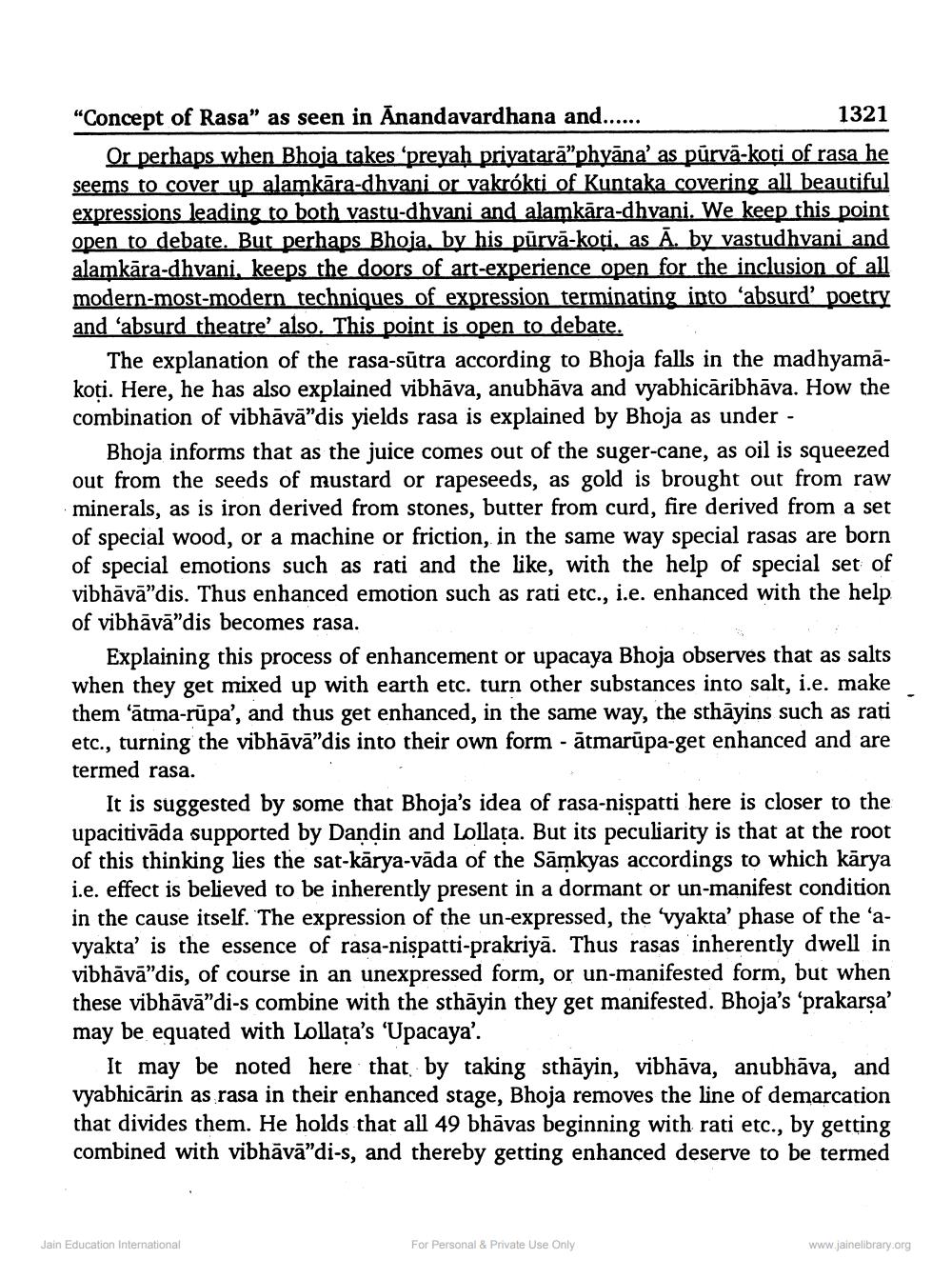________________
"Concept of Rasa" as seen in Anandavardhana and......
1321 Or perhaps when Bhoia takes 'prevah privatarā"phyāna' as purvā-koti of rasa he seems to cover up alamkāra-dhvani or vakrókti of Kuntaka covering all beautiful expressions leading to both vastu-dhvani and alamkāra-dhvani. We keep this point open to debate. But perhaps Bhoja, by his pūrvā-koti, as Ā. by vastudhvani and alamkāra-dhvani, keeps the doors of art-experience open for the inclusion of all modern-most-modern techniques of expression terminating into 'absurd' poetry and 'absurd theatre' also. This point is open to debate.
The explanation of the rasa-sūtra according to Bhoja falls in the madhyamakoţi. Here, he has also explained vibhāva, anubhāva and vyabhicāribhāva. How the combination of vibhāvā"dis yields rasa is explained by Bhoja as under -
Bhoja informs that as the juice comes out of the suger-cane, as oil is squeezed out from the seeds of mustard or rapeseeds, as gold is brought out from raw minerals, as is iron derived from stones, butter from curd, fire derived from a set of special wood, or a machine or friction, in the same way special rasas are born of special emotions such as rati and the like, with the help of special set of vibhāvā"dis. Thus enhanced emotion such as rati etc., i.e. enhanced with the help of vibhāvā"dis becomes rasa.
Explaining this process of enhancement or upacaya Bhoja observes that as salts when they get mixed up with earth etc. turn other substances into salt, i.e. make them 'ātma-rūpa', and thus get enhanced, in the same way, the sthāyins such as rati etc., turning the vibhāvā"dis into their own form - ātmarūpa-get enhanced and are termed rasa.
It is suggested by some that Bhoja's idea of rasa-nispatti here is closer to the upacitivāda supported by Dandin and Lollața. But its peculiarity is that at the root of this thinking lies the sat-kārya-vāda of the Sāmkyas accordings to which kārya i.e. effect is believed to be inherently present in a dormant or un-manifest condition in the cause itself. The expression of the un-expressed, the vyakta' phase of the 'avyakta' is the essence of rasa-nispatti-prakriyā. Thus rasas inherently dwell in vibhāvā"dis, of course in an unexpressed form, or un-manifested form, but when these vibhāvā"di-s combine with the sthāyin they get manifested. Bhoja's 'prakarsa' may be equated with Lollata's 'Upacaya'.
It may be noted here that by taking sthāyin, vibhāva, anubhāva, and vyabhicărin as rasa in their enhanced stage, Bhoja removes the line of demarcation that divides them. He holds that all 49 bhāvas beginning with rati etc., by getting combined with vibhāvā"di-s, and thereby getting enhanced deserve to be termed
Jain Education International
For Personal & Private Use Only
www.jainelibrary.org




